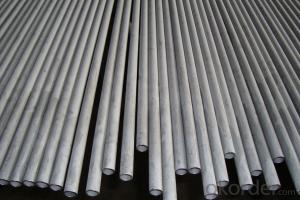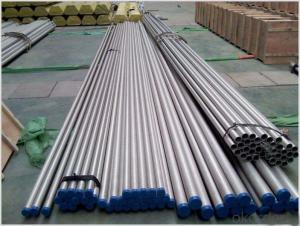Boiler Heat Exchange Stainless Steel Pipe 31803 ASTM A213
- Loading Port:
- Ningbo
- Payment Terms:
- TT OR LC
- Min Order Qty:
- 1 m.t.
- Supply Capability:
- 5000 m.t./month
OKorder Service Pledge
OKorder Financial Service
You Might Also Like
1、Structure of Boiler Heat Exchange Stainless Steel Pipe 31803 ASTM A213 Description:
Boiler Heat Exchange stainless steel pipe is often used in the heating system. Heating system, or those stored energy (such as solar energy) in the form of heat, need to be built with the material that can withstand temperatures up to 550 degrees Celsius. High chromium molybdenum welded steel pipe can work in the extreme, which maintain as the ideal material for the construction of power station.
2、Main Features of Boiler Heat Exchange Stainless Steel Pipe 31803 ASTM A213:
• High manufacturing accuracy
• High strength
• Small inertia resistance
• Strong heat dissipation ability
• Good visual effect
•Reasonable price
3、Boiler Heat Exchange Stainless Steel Pipe 31803 ASTM A213 Images:
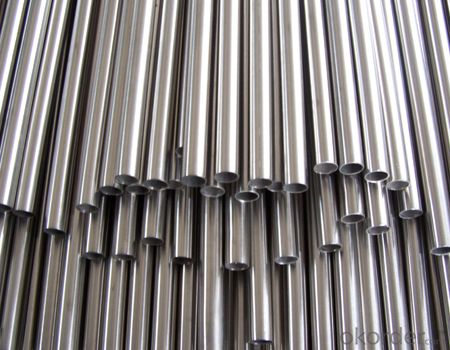
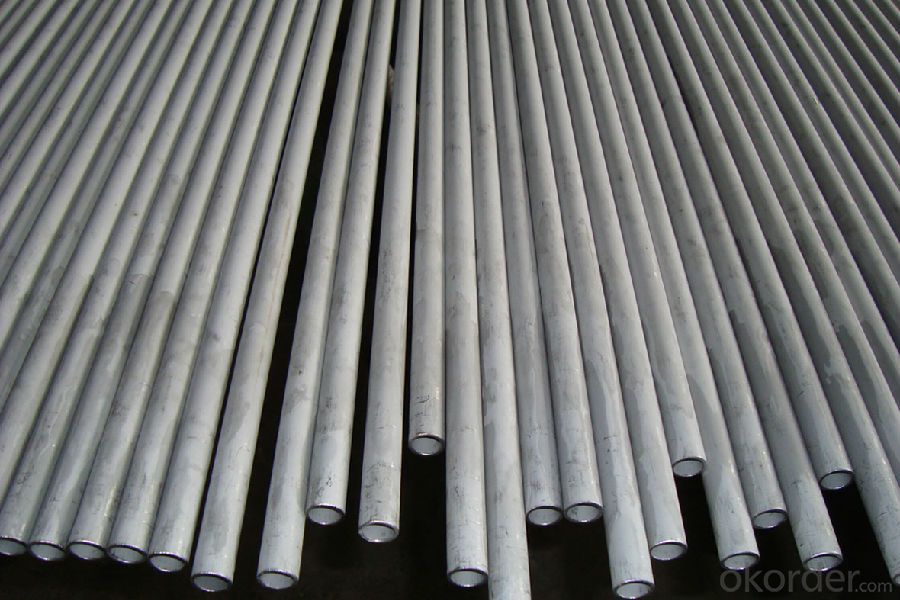
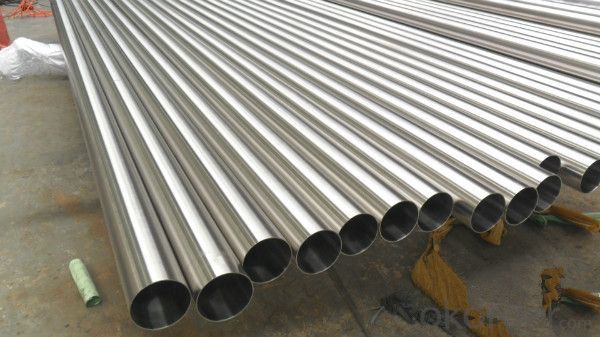
4、Boiler Heat Exchange Stainless Steel Pipe 31803 ASTM A213 Specification:
1)Commodity: heat exchanger pipe
2))Material: 304,316L,304L,316,321,310S,etc
3)Thickness:0.5-100mm
4)Length: 1-14m
| Material Grade | 304,304L,316 ,316L,321,310S,2205,904and so on. |
| Standard | ASTM A312, A554, A249, A269 and A270,ect |
| DIN 17456-85 , DIN 17458-85, DIN 17459-92,ect | |
| JIS G3446-1994, JIS G3448-1997, JIS G3459-1997, JIS G3463-1994,ect | |
| GB13296-1991, GB14975-2002, GB14976-2002,ect | |
| Outer Diameter | 13.7-2020mm |
| Thickness | 0.5-50mm |
| Length | 1m -12m or as customers' request |
| Polish | 180G, 320G, 400G Satin / Hairline |
| 400G, 500G, 600G or 800G Mirror finish | |
| Test | eddy current inspection, ultrasonic inspection, X-ray inspection, real-time imaging, hydrostatic test, spectral analysis, intergranular corrosion, water pressure test, and mechanical property testing facilities. |
| Payment | 1) by L/C at sight, |
| 2) 30% deposit, 70% balance before Shipping. | |
| Delivery time | A.7 days if this goods is stock goods. |
| B.25 days if this goods will be produced after order | |
| Validity | Valid time is 3 days for price usually. |
| Payment terms | FOB QINGDAO |
| MOQ | 1 ton |
| Capacity | 1000 ton per month |
| Certificate | ISO, SGS, and third part inspection |
| Applications | the products are widely used in chemical industry, condenser pipe, heat exchanger, petroleum, shipping military, environment protection, high temperature resistant, low temperature resistant, corrosion resistant and so on. |
| packing details | 1) Wooden-box Package. 2) The Wooden Frame Packing. 3) Intertexture Cloth Packaging with the Iron Sheet Bonding and the Two Terminals Covered With Plastic Dome. |
5、FAQ of Boiler Heat Exchange Stainless Steel Pipe 31803 ASTM A213:
①How is the quality of your products?
Our products are manufactured strictly according to national and internaional standard, and we take a test on every pipe before delivered out. If you want see our quality certifications and all kinds of testing report, please just ask us for it.
Guaranteed: If products’ quality don’t accord to discription as we give or the promise before you place order, we promise 100% refund.
②How about price?
Yes, we are factory and be able to give you lowest price below market one, and we have a policy that “ for saving time and absolutely honest business attitude, we quote as lowest as possible for any customer, and discount can be given according to quantity”,if you like bargain and factory price is not low enough as you think, just don’t waste your time.Please trust the quotation we would give you, it is professional one.
③Why should you chose us?
Chose happens because of quality, then price, We can give you both.Additionally, we can also offer professional products inquiry, products knowledge train(for agents), smooth goods delivery, exellent customer solution proposals.Our service formula: good quality+good price+good service=customer’s trust
SGS test is available, customer inspection before shipping is welcome, third party inspection is no problem.
Any question, pls feel free to contact us !
- Q:Can stainless steel pipes be used in extreme weather conditions?
- Yes, stainless steel pipes can be used in extreme weather conditions. Stainless steel is known for its corrosion resistance and durability, making it suitable for various environments, including harsh weather conditions. It can withstand extreme temperatures, high humidity, heavy rainfall, and exposure to saltwater or chemicals, making it a reliable choice for piping systems in such conditions.
- Q:What are the different types of stainless steel pipe hangers?
- There is a variety of stainless steel pipe hangers available, each designed for specific applications and needs. Some commonly used types include: 1. Split ring hangers: These hangers consist of a split ring that wraps around the pipe to provide support and stability. They are easy to install and adjust, making them suitable for pipes of different sizes. 2. Clevis hangers: Clevis hangers feature a U-shaped bracket that attaches to the pipe using a clevis pin. They have a high load-bearing capacity and are commonly used for vertical pipe installations. 3. Swivel ring hangers: Swivel ring hangers are designed to allow the pipe to move freely, accommodating thermal expansion and contraction. They have a circular ring that can rotate, reducing stress on the pipe. 4. Riser clamps: Riser clamps are used to support vertical pipes that run along walls or beams. They come in various designs and can be adjusted to fit different pipe sizes and configurations. 5. Beam clamps: Beam clamps are used to secure pipes to overhead beams or structures. They typically have a bolt or threaded rod that attaches the clamp to the beam, providing a secure mounting point. 6. Pipe rollers: Pipe rollers support pipes that need horizontal movement, such as sliding or rolling applications. They consist of rollers or wheels that allow the pipe to move smoothly. 7. Pipe straps: Pipe straps are simple and cost-effective hangers that wrap around the pipe and attach to a surface using screws or bolts. They are commonly used for light-duty applications or in limited space conditions. 8. Pipe saddles: Pipe saddles are used to support pipes that need to be raised or protected from direct contact with a surface. They usually have a curved or U-shaped design that cradles the pipe. It is important to choose the appropriate stainless steel pipe hanger based on specific installation requirements, including pipe size, load capacity, movement, and environmental factors. Seeking advice from a knowledgeable supplier or engineer can assist in choosing the right hanger for the job.
- Q:What is the internal lining used for stainless steel pipes?
- The internal lining used for stainless steel pipes depends on the specific application and requirements. There are various options available, such as: 1. Polyethylene (PE) lining: This is a commonly used lining material for stainless steel pipes. PE lining provides excellent corrosion resistance and is suitable for transporting water, chemicals, and other corrosive fluids. 2. Epoxy lining: Epoxy coatings are often used as an internal lining for stainless steel pipes to protect against corrosion. Epoxy linings are durable, resistant to chemicals, and can be applied in different thicknesses depending on the application. 3. Cement mortar lining: In certain applications, stainless steel pipes may be lined with cement mortar to provide a protective barrier against corrosive fluids or to enhance the structural integrity of the pipe. Cement mortar linings are commonly used for water supply pipelines. 4. PTFE lining: Polytetrafluoroethylene (PTFE) lining is used for stainless steel pipes that require a high level of chemical resistance. PTFE linings are non-reactive and can withstand a wide range of corrosive substances, making them suitable for industries such as pharmaceuticals and chemicals. It is important to consult with experts or engineers to determine the appropriate internal lining for stainless steel pipes, considering factors such as the type of fluid being transported, operating conditions, and the required level of corrosion resistance.
- Q:Can stainless steel pipes be used for sewage systems?
- Yes, stainless steel pipes can be used for sewage systems. Stainless steel is highly resistant to corrosion and can withstand the harsh conditions and chemicals found in sewage. It also has a smooth surface, which helps prevent the buildup of waste and reduces the risk of clogging. Additionally, stainless steel pipes are durable and long-lasting, making them a reliable choice for sewage systems.
- Q:Are stainless steel pipes suitable for pharmaceutical factories?
- Yes, stainless steel pipes are suitable for pharmaceutical factories. Stainless steel is known for its corrosion resistance, durability, and hygienic properties, making it a preferred material for pharmaceutical applications. It is easy to clean, maintains product purity, and can withstand high-pressure and high-temperature conditions often found in pharmaceutical processes. Additionally, stainless steel pipes comply with industry regulations and standards, ensuring the safety and quality of pharmaceutical products.
- Q:Are stainless steel pipes suitable for food storage tanks?
- Stainless steel pipes are an excellent choice for food storage tanks due to their high suitability. They possess remarkable corrosion resistance, making them ideal for the storage of food and beverages. Unlike other materials, stainless steel pipes guarantee the safety and quality of the stored food as they do not release any harmful substances. Moreover, their easy maintenance and cleaning contribute to maintaining proper hygiene in food storage tanks. Additionally, stainless steel pipes are durable and capable of withstanding high temperatures, ensuring the longevity and reliability of the tanks. In conclusion, stainless steel pipes are the preferred option for food storage tanks due to their sanitary properties, corrosion resistance, and durability.
- Q:What is the difference between 304Cb and 316Cb stainless steel pipes?
- The main difference between 304Cb and 316Cb stainless steel pipes lies in their chemical composition and their respective properties. 304Cb stainless steel is an austenitic stainless steel alloy that contains chromium and nickel. It also has a small amount of niobium, which enhances its resistance to intergranular corrosion. This makes 304Cb stainless steel pipes suitable for a wide range of applications, including food processing, chemical and petrochemical industries, and architectural purposes. On the other hand, 316Cb stainless steel is also an austenitic stainless steel alloy that contains chromium and nickel. However, it has a higher percentage of molybdenum, which gives it superior resistance to corrosion and pitting in chloride environments. This makes 316Cb stainless steel pipes ideal for applications where exposure to saltwater or other corrosive substances is common, such as marine environments or coastal areas. In summary, while both 304Cb and 316Cb stainless steel pipes are excellent choices for various applications, 316Cb stainless steel offers better corrosion resistance in chloride environments due to its higher molybdenum content. Depending on the specific needs and environment of the application, one may be more suitable than the other.
- Q:What is the difference between 316 and 316LN stainless steel pipes?
- 316 and 316LN stainless steel pipes are variations of the same stainless steel grade known as 316, but there are some distinctions between them. The primary disparity between 316 and 316LN stainless steel pipes resides in their nitrogen levels. 316LN stainless steel contains a higher nitrogen content than 316 stainless steel. The inclusion of nitrogen enhances the material's strength and corrosion resistance, making it more suitable for specific applications. Due to its elevated nitrogen content, 316LN stainless steel pipes display superior resistance to pitting and crevice corrosion, especially in chloride environments. This renders them particularly appropriate for utilization in marine settings or other scenarios where the pipes may encounter corrosive substances. Another contrast between the two grades lies in their availability and cost. 316 stainless steel pipes are more widely accessible and commonly employed, making them generally more cost-effective than 316LN stainless steel pipes. However, 316LN stainless steel pipes may be necessary for particular applications where enhanced corrosion resistance is required. In conclusion, the main difference between 316 and 316LN stainless steel pipes is their nitrogen content, which impacts their corrosion resistance properties. While 316 stainless steel is more readily available and cost-effective, 316LN stainless steel offers improved resistance to pitting and crevice corrosion, making it suitable for specific applications.
- Q:What are the differences in the properties of hot-rolled and cold-rolled stainless steel tubes?
- From the current market, cold working processing method has been basically eliminated the hot working mode, this is caused by defects in thermal processing of stainless steel pipe: thermal processing of stainless steel tube, as in the case of heating, a molding, molding the mechanical properties of the stainless steel tube is relatively poor, so the tube doing mechanical processing will often cannot meet the needs of mechanical and physical properties.
- Q:How do you prevent freezing in stainless steel pipes?
- One way to prevent freezing in stainless steel pipes is by insulating them with high-quality pipe insulation. This insulation helps maintain the temperature of the pipes and prevents heat loss, thus reducing the risk of freezing. Additionally, ensuring proper ventilation in areas where the pipes are located can also help prevent freezing by allowing warm air to circulate around the pipes.
1. Manufacturer Overview |
|
|---|---|
| Location | |
| Year Established | |
| Annual Output Value | |
| Main Markets | |
| Company Certifications | |
2. Manufacturer Certificates |
|
|---|---|
| a) Certification Name | |
| Range | |
| Reference | |
| Validity Period | |
3. Manufacturer Capability |
|
|---|---|
| a)Trade Capacity | |
| Nearest Port | |
| Export Percentage | |
| No.of Employees in Trade Department | |
| Language Spoken: | |
| b)Factory Information | |
| Factory Size: | |
| No. of Production Lines | |
| Contract Manufacturing | |
| Product Price Range | |
Send your message to us
Boiler Heat Exchange Stainless Steel Pipe 31803 ASTM A213
- Loading Port:
- Ningbo
- Payment Terms:
- TT OR LC
- Min Order Qty:
- 1 m.t.
- Supply Capability:
- 5000 m.t./month
OKorder Service Pledge
OKorder Financial Service
Similar products
New products
Hot products
Hot Searches
Related keywords

